 Narrowsburg
NarrowsburgLight Rain Fog/Mist, 43°
Wind: 8.1 mph
 Narrowsburg
NarrowsburgLIVINGSTON MANOR, NY — On the 133rd anniversary of the Livingston Manor Fire Department (LMFD), the dedicated volunteer firefighters are gearing up to host the 95th Sullivan County Volunteer …
Stay informed about your community and support local independent journalism.
Subscribe to The River Reporter today. click here
This item is available in full to subscribers.
Please log in to continue |
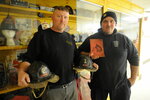



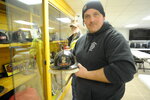
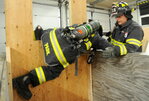



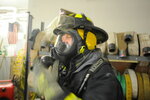


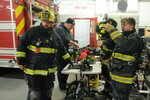
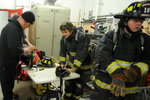

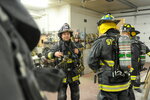
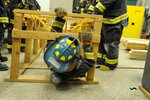
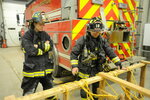
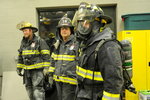

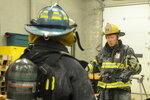


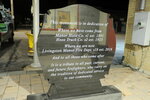
LIVINGSTON MANOR, NY — On the 133rd anniversary of the Livingston Manor Fire Department (LMFD), the dedicated volunteer firefighters are gearing up to host the 95th Sullivan County Volunteer Fire Association’s (SCVFA) annual parade on Saturday, September 7.
Last year, the annual event was hosted by the Roscoe Rockland Fire Department, a neighboring volunteer organization.
As a point of historical reference, Manor’s Station 18 hosted the first SCVFA Parade on October 3, 1928, followed by similar honors in 1991, 2003 and 2008.
In preparation for the 95th SCVFA Parade, on Friday, September 6, LMFD will present a Mardi Gras parade, followed by bed races, a bucket brigade competition and fireworks at dark.
Chief Robert Trotti Jr. has been with the department for 21 years. He first signed up while still in high school at the Home of the Wildcats. He graduated in 1999.
“I joined not to be chasing women, but to fight fire,” he recalled of those earlier years. As time moved along and “I got a little older, it was the adrenaline rush, driving the trucks, fighting fire… and the camaraderie; it’s like a second family here.”
Chief Trotti said that when he initially joined, there were about 100 members in the department, while today there are 41 volunteers (including 18 interior firefighters), along with six young cadets working hard to become certified firefighters.
The current roster of line officers is Trotti, the chief, Brett Marsden (1stt assistant chief), Chris Tuleweit (2nd assistant chief), William Roser (captain), Charlie Hoag (lieutenant), CJ Weickum (lieutenant), Joel Sherwood (lieutenant), Randy Hoag (chief engineer) and George Dolce (safety officer).
The administrators are Rich Vessio (president), Cameron Hoag (vice president), Randy Hoag (secretary), Roy Amback (treasurer) and Mike Cristaldi (co-treasurer).
Cadets on the way to becoming full-fledged volunteer firefighters: Lucas Dame, Adam Hoag, Aiden Kirchner, Michael Kirchner, Nicholas Rivenburg and Nicholas Warren.
The youngest member is 14-year-old cadet Lucas Dame, an eighth-grader at Livingston Manor Central School. The oldest is 78, and the department boasts four active members with over half a century of service each.
“It’s been in my family for quite a while,” said Dame of his family’s association with the local fire service. He pointed to an old photo on a wall featuring a group of firefighters, including his great-great grandfather.
Asked why he decided to join, Dame replied, “I’ve always been interested in helping people out.”
And of what was it like to go through a couple of survival training exercises at the firehouse, including ones that simulated hanging out a window in an engulfed structure fire and crawling through a maze of electrical wires, the youngest cadet said “It was fun, but in a real-life situation, I imagine it’s stressful. And it’s important, because you have to know how to get in and out… just try to keep it safe!”
The fire service is no longer a man’s world, and the LMFD is no exception. The roster lists several women as firefighters, including three who are interior qualified.
Until he recently passed in his 90s, George Silverman held the record of longest active service, with 75 years on active duty.
“I joined at 17 and graduated from Livingston Manor in 1999,” said Lt. Hoag. “For me it was a family tradition, as my grandfather was a long-time member, and my family has been in the fire service since the start.”
In describing stories from the early days of firefighting in the Manor, he said, “Before there was a siren, there was always a steam engine of some sort in town, and if someone blew the whistle, people in town would know something was going on.
“My great-uncle, Milton Ward, would hitch up his team of horses, race down to the fire house and hook up the ladder wagon. You’d better not get in the way of Milt and his horses, or you’d get run over!”
Memorable fires in the Manor include the Hoos Bakery building blaze of November 2012. It destroyed the landmark building housing the Lazy Beagle, a pub and grill along with several other local enterprises, and blasted shards of metal propane tanks into the school yard.
Lt. Hoag recalled that but for a lucky lapse in time between explosions, the fire “could have cooked us alive… the first explosion went off when the tanks [did]. ”
In 1963, the main building of the old Waldermer Hotel caught fire, and two people were killed. More recently, the fire department was called out to assist with a 500-year flood event, a tragedy that cost the life of a teenager swept to her death in the raging waters.
Chief Trotti Jr. and Lt. Hoag are both passionate about preserving the heritage of their local department. Over recent years, they have acquired an ever-expanding collection of artifacts related to the history of the department, including rare firefighters’ helmets from the earliest days and a time-worn copy of what may be the only existing brochure from the first SCVFA parade in 1928. The brochure was picked up at a tag sale.
On the topic of volunteerism, Lt. Hoag said, “I feel it’s at an all-time low; a lot of local people work (out of the area) and just can’t pack up and go fight fire. But back in the ‘70s, a lot of people worked in town and the fire station was like the center of the town.”
He noted that among a lot of second-home owners there is a misconception, what he called a “city mentality,” that if a fire or medical emergency occurs, paid firefighters or EMS personnel are just a phone call away.
A common reaction is often “What took you so long?”, but people have to realize “Everybody’s who’s out here stopped what they were doing to come and save your house!”
“When the whistle blows, we’re dealing with life-and-death situations… and we’ve got to go in and fix the problem [as volunteers].”
In commenting on the state of volunteerism, Chief Trotti explained that it’s hard for local volunteers to respond during the work day, and that while mandated training requirements are time consuming, “the training the state puts on is excellent.”
Chief Trotti said the department is always looking for new volunteers to join their ranks. “Come and talk to the chief; get an application and we’ll go over it page-by-page.
“On Monday nights, if the lights are on, come knock on the door, and any fireman can point you in the direction you need to go,” said Chief Trotti. To which Lt. Hoag added, “There’s a job for anybody if they want to be part of it.”
The firehouse is located at 93 Main St. For information about the Livingston Manor Fire Department or how to join, call the fire station at 845/439-4490, or Chief Trotti’s cell at 845/423-1396, visit the department’s Facebook page at Livingston Manor Fire Department, or stop by the firehouse during regularly scheduled drill nights every Monday evening.
LIVINGSTON MANOR, NY — According to Lt. Charlie Hoag, who along with Chief Trotti are unofficial guardians of the department’s history, the company was started in 1891, and then incorporated on January 14, 1090 as Manor Hose Co #1.
The second company was established in 1923, and incorporated as Hoos Truck Co #2 on January 24, 1924.
For decades, both fire companies were under one roof, until January 1, 2017 when they were united to create the Livingston Manor Fire Department.
“In 1891, it was just a group of men who decided the town was evolving and needed some sort of fire protection other than a bucket brigade,” said Hoag. “They got together [to raise money], had clambakes and different fund raisers, because there wasn’t a tax base at the time.
“They built a firehouse, and a couple of years later a hose cart and a horse-drawn ladder wagon.”
In 1916, the company purchased a 1916 Model T roadster, and put in on a chain-driven truck frame, thus creating the first pumper in the county.
“It was guaranteed to pump a thousand gallons of water through a three-inch hose to go over the top of a four-story building,” explained Lt. Hoag.
A Liberty newspaper of that era reportedly ran an article that stated the pumper was brought down from Indiana to Wilkes-Barre, PA on a O&W Railroad flat car. After it was unloaded, it was driven to Manor, with a quick stop for a demonstration in Jeffersonville.
In those bygone times, other departments in the area reportedly used soda acid apparatus, before newer rigs were designed to hook up to sources of water. Soda acid apparatus used a tank of water mixed with sodium bicarbonate; a jar of sulfuric acid was suspended in the tank. When it was needed for a fire, the firefighters broke the jar of acid, and that created enough pressure to force the water out of the tank.
The newer rigs drastically improved firefighting.
Hoag recalled that history records a salesman of that time telling the local fire department, “You can go that way, and shoot 50 gallons of soda acid on a fire, and watch the building burn up, or you buy this and get water from the river.”
“In 1916, that was something,” chimed in Chief Trotti, noting that the department paid $650 for the new apparatus.
In 1923, when Hoos Truck Co #2 was founded (in addition to Manor Hose Co #1), on a busy day, you could see three to four thousand folks on Main Street wending their way between 14 hotels, in a town that was essentially divided by the O & W Railroad.
Lt. Hoag said that Fred Hoos, a well-known baker, donated a then-princely sum of $500 to help establish the second fire company in Livingston Manor. That was important in part because if the long trains of the day were stopped on the way to Liberty, the town was essentially cut in half, creating life-threatening situations if a fire happened on the “wrong side of the tracks.”
Some information was used from www.nemoff.org/post/chemical-fire-engines.
Comments
No comments on this item Please log in to comment by clicking here